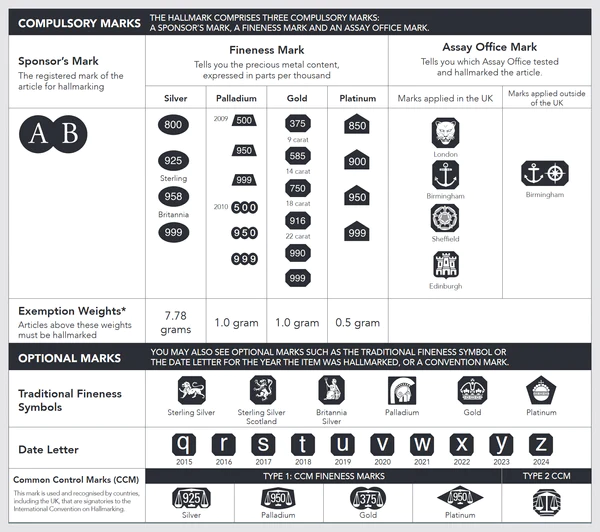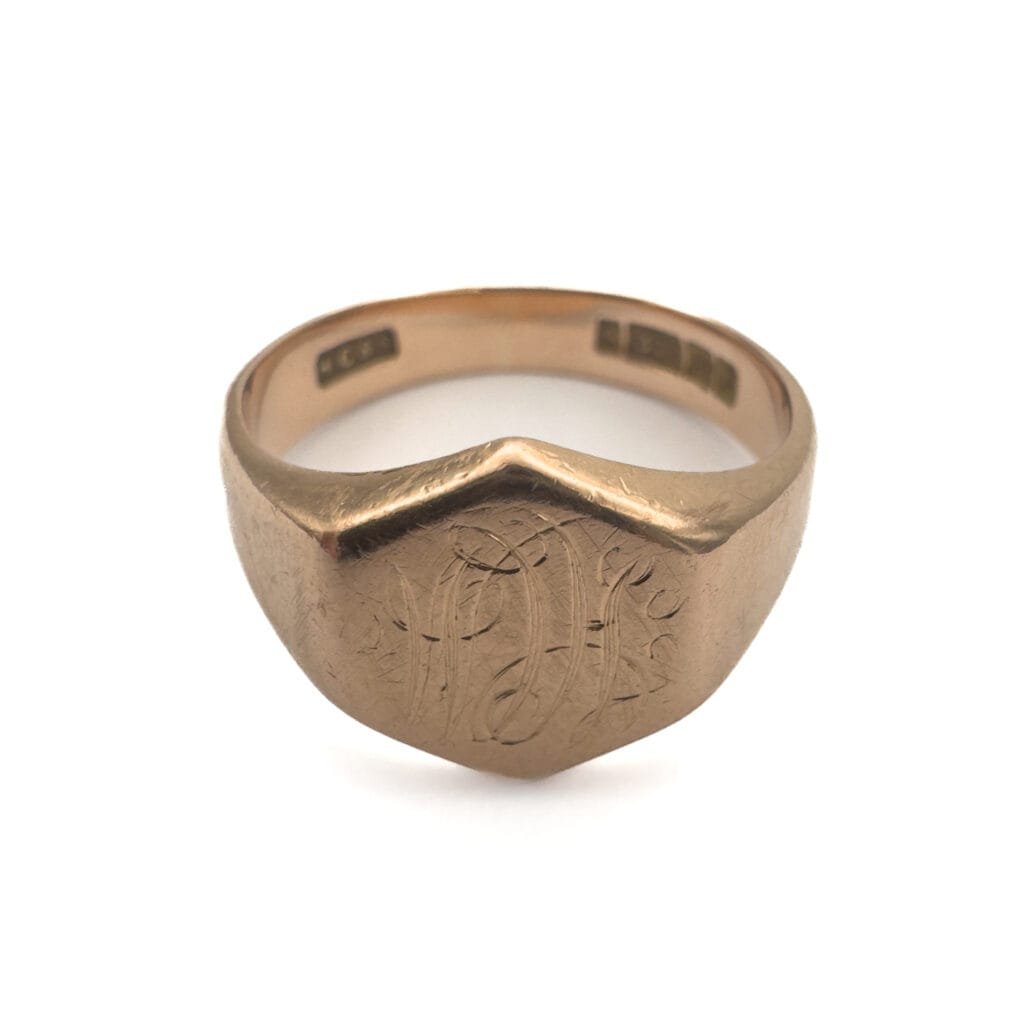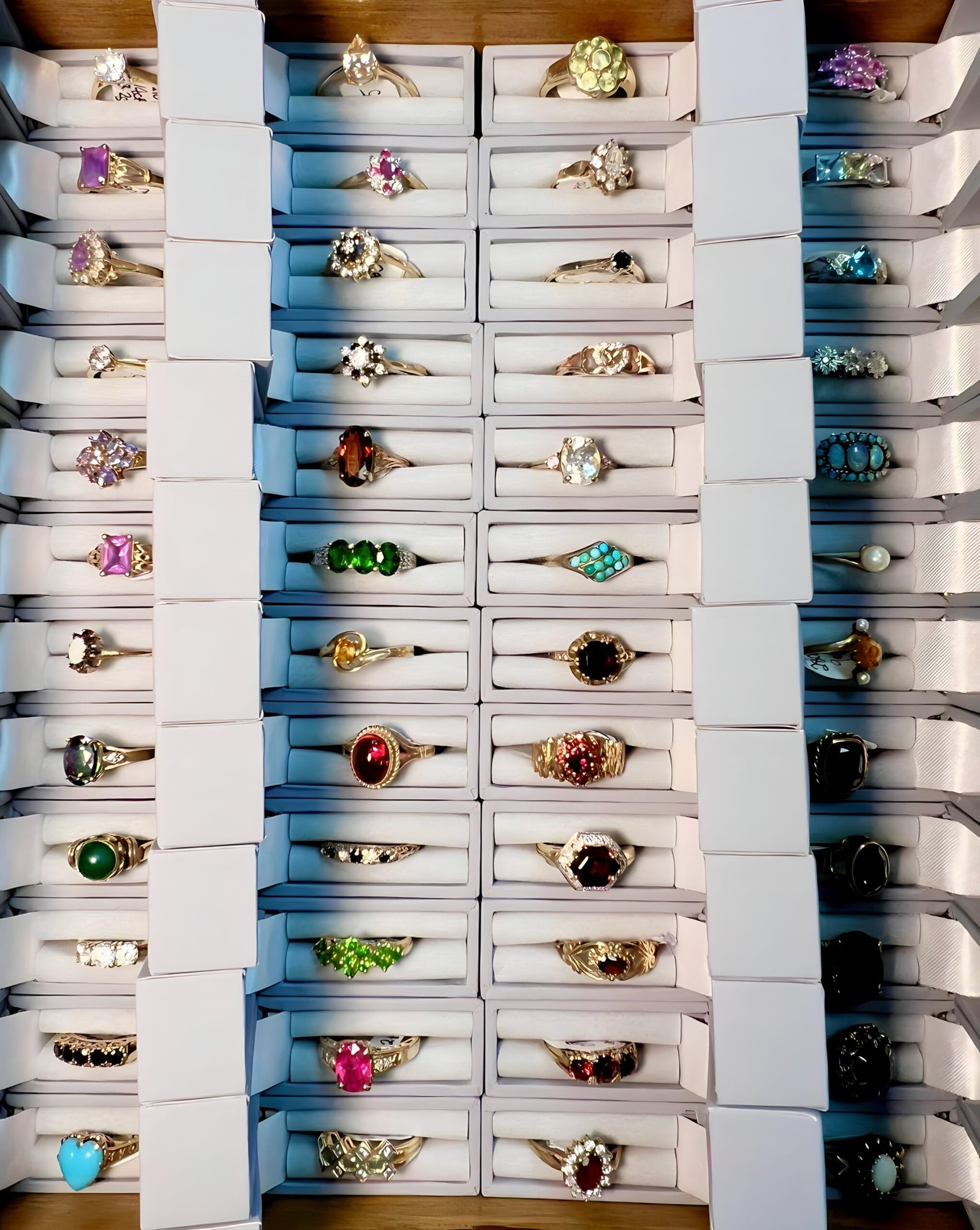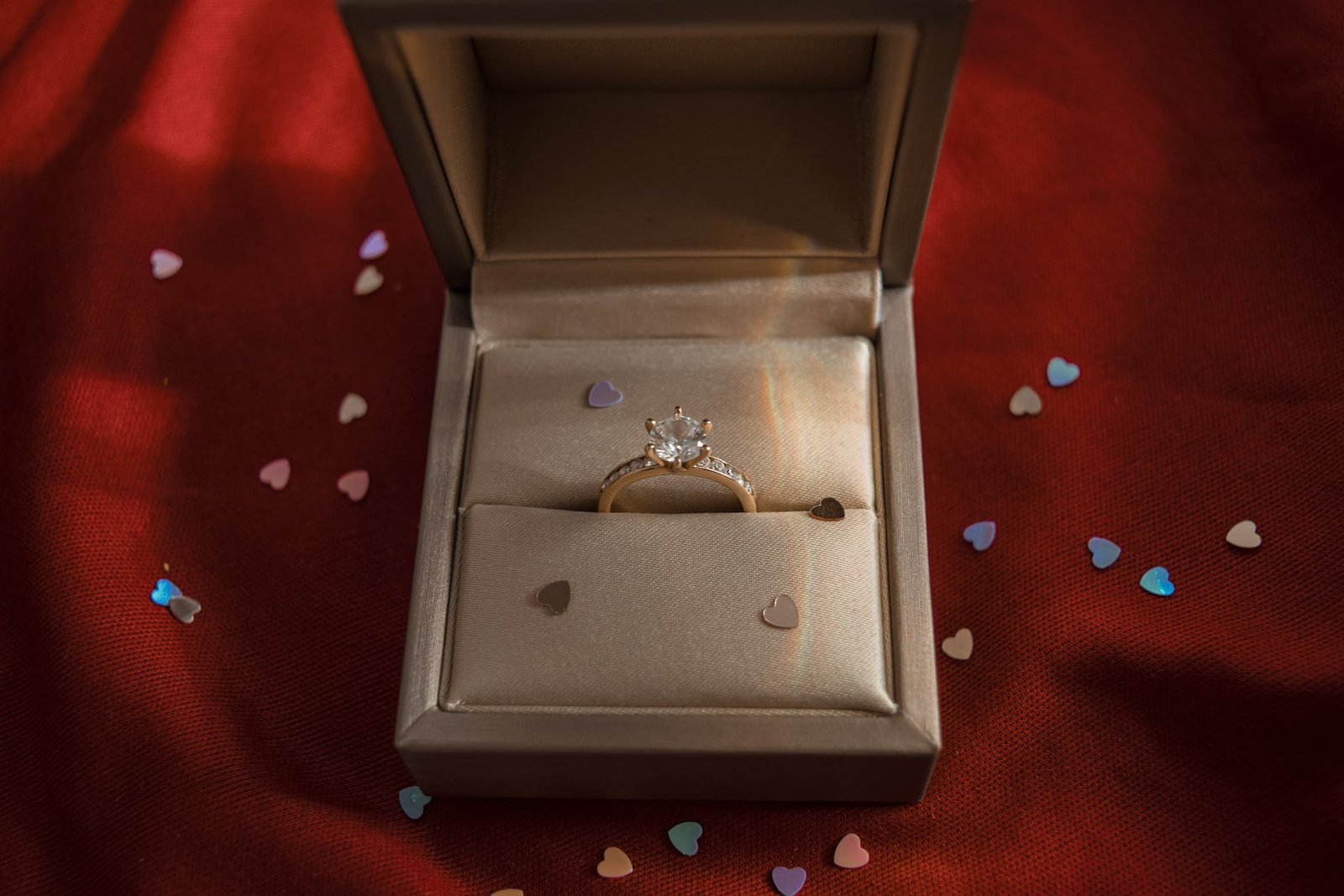What is a hallmark? In the rich tapestry of jewellery craftsmanship, hallmarks stand as symbols of quality, authenticity, and craftsmanship. Dating back centuries, hallmarking has been an integral part of the jewellery-making process, offering consumers assurance and confidence in the precious metals adorning their adornments. Let’s embark on a journey to unravel the mysteries of hallmarks, exploring their history, significance, and meaning in the world of fine jewellery.
A Brief History of Hallmarking:
The Hallmarking Act of 1973 stands as a pivotal moment in the history of hallmarking in the United Kingdom. Hallmarking traces its origins to ancient times when goldsmiths and silversmiths would mark their creations with symbols to indicate the purity and authenticity of the metal. Over time, these symbols evolved into standardised marks, regulated by official assay offices to ensure consistency and accuracy.
In the United Kingdom, the practice of hallmarking was formally established in the 13th century, with the Worshipful Company of Goldsmiths in London granted authority to assay and hallmark precious metals. Since then, hallmarking has become a hallmark of quality and trust in the jewellery industry. The introduction of the Hallmarking Act of 1973 reinforced this tradition by setting stringent regulations for the marking of gold, silver, platinum, and palladium, ensuring consumer protection and confidence in the jewellery market. This act requires all precious metal jewellery sold in the UK to be accurately hallmarked, safeguarding consumers against counterfeit or substandard items.

Understanding Hallmarks:
Hallmarks typically consist of a series of marks stamped onto the metal, each conveying specific information about the metal’s purity, the maker’s mark, and the assay office where it was tested. For example, a hallmark of “750” indicates 18-carat gold, “925” signifies sterling silver, and “950” denotes platinum. These marks are regulated by assay offices, such as the Assay Office in London, which also assigns additional symbols to indicate the year of assay and the maker’s mark. In addition to these mandatory markings, you may also find optional symbols, such as commemorative marks or import marks for foreign-made jewellery.
Hallmarks for Different Metals:
In the United Kingdom, hallmarking provides vital information about the purity and authenticity of precious metals used in jewellery. Gold jewellery is often categorised by carats, with 24-carat gold being the purest form. The hallmark for gold typically consists of a number followed by the carat symbol, such as “750” for 18-carat gold. Silver jewellery, on the other hand, is usually marked with the purity percentage, such as “925” for sterling silver.
When it comes to platinum and palladium, both are marked with a “950” hallmark to indicate their purity. However, the shape of the hallmark helps differentiate between the two metals. Platinum hallmarks are a house-like shape, while palladium hallmarks are typically in the shape of 3x ovals or a trapezium. Additionally, palladium may also be marked with a “500” hallmark, indicating a lower purity level (50% Palladium & 50% other metals. However, this is less common than the “950” hallmark.
Understanding these hallmarking distinctions allows consumers in the UK to make informed choices when selecting jewellery, ensuring that they receive pieces crafted from the highest quality and most suitable precious metals for their needs.

Why Antique Jewellery May Not Have a Hallmark:
Antique jewellery may not always bear hallmarks for several reasons. Hallmarking regulations have evolved over time, and what may have been acceptable in the past may not meet modern standards. Additionally, some antique pieces may have been produced before hallmarking became mandatory or in regions where hallmarking was not enforced. Furthermore, over the centuries, hallmarks may have become worn or faded due to wear and tear, making them difficult to discern. Other factors, such as alterations to the jewellery or deliberate removal of hallmarks, may also contribute to the absence of these marks.
Compulsory Hallmarking and Exemptions:
In the United Kingdom, hallmarking became compulsory with the passing of the Hallmarking Act of 1973, which established regulations for hallmarking precious metals. While antique jewellery may be exempt from compulsory hallmarking, it is subject to certain conditions, such as being sold with an accurate description of its age and composition. However, many antique pieces still undergo voluntary hallmarking to provide additional assurance of their authenticity and quality. We can assure you that any pieces sold by us at Selected Antiques & Jewellery are as described and we would never attempt to sell an item as anything other than what it is.
In conclusion, hallmarks serve as enduring symbols of quality, authenticity, and craftsmanship in the world of fine jewellery. Whether adorning a piece of contemporary artistry or an antique treasure, these marks offer consumers assurance and confidence in the precious metals that grace their jewellery collections. So, the next time you admire a piece of jewellery, take a closer look at its hallmarks, and let their story of quality and trust illuminate your appreciation of its beauty and craftsmanship. For further information, the London Assay Office has a collection of videos talking more about hallmarks.



